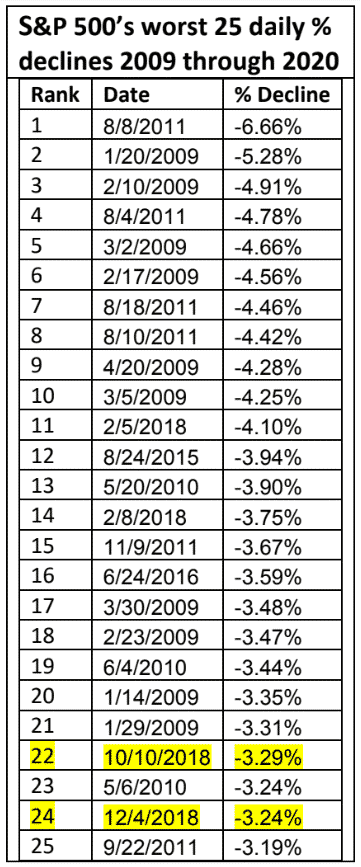Through the first 10 days of 2020, the Bull & Bear Tracker:
- Produced a gain of 3.5% vs. the S&P 500’s 1.1%
- 100% cash for 3 of the 7 trading days
- 50% invested for the 4 of 7 days in market
The 2020 year to date return and low risk exposure for the Bull & Bear Tracker’s signals is comparable to December 2019.
For the last month of 2019, the Bull & Bear Tracker produced a return of 6.7%, while being in 100% cash for eight of December’s 21 days.
Since June 30, 2019, the Bull & Bear Tracker’s signals produced a return of 34.1% vs. 9.5% for the S&P 500.
The Bull & Bear produced a profit for each of the six months with an average monthly profit of 5.5%.
From April 9, 2018, through January 10, 2020, the Bull & Bear Tracker gained 69.8% vs. 23.8% for the S&P 500.
The Bull & Bear Tracker is an excellent vehicle for hedging against market crashes since it produces its greatest returns when the S&P 500 and Dow Jones indices are the most volatile.
In 2018 the Bull & Bear Tracker’s first signals produced gains of 7.96% and 9.84% for two of the S&P 500’s worst 25 percentage decline days from 2009 to 2020.

The Bull & Bear Tracker’s signals are utilized to trade exchange traded funds (ETFs) which mimic the performance of the S&P 500. A long ETF is utilized when the signal is green, while a short or inverse ETF is utilized when the signal is red.
For example, when the S&P 500 advances by 10% while under a green signal, the long ETF increases by 10%. Conversely, should the S&P 500 decline by 10% while a red signal is in effect, the inverse or short ETF would increase by 10%.
For more about the Bull & Bear Tracker go to http://www.bullbeartracker.com. For a 90-day free trial subscription go to https://bullsnbears.com/bull-bear-tracker-register/.